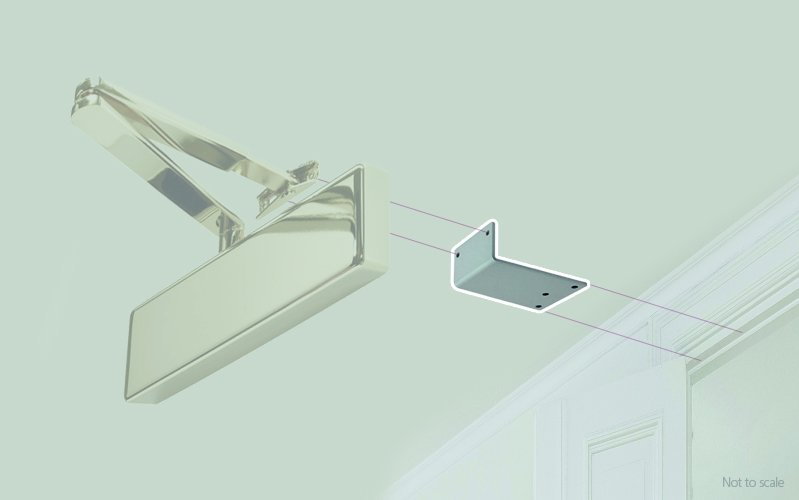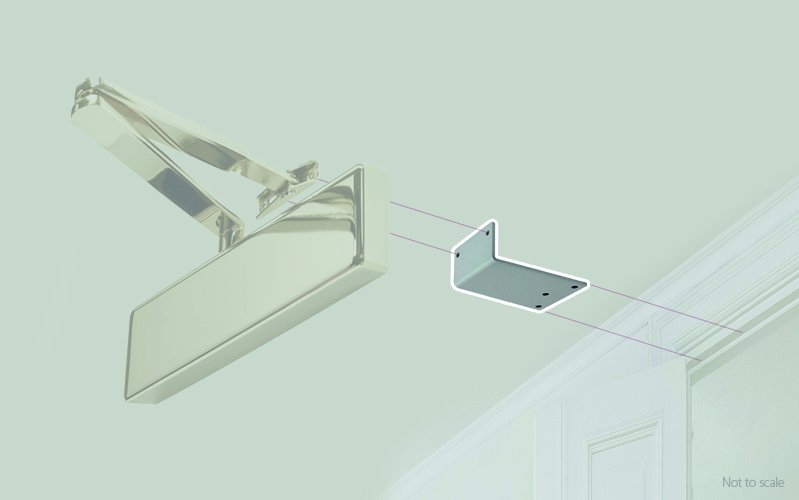
Should closer arms be fitted directly to the door frame or the architrave?
At Rutland, we always like to take time to have conversations with our customers and listen to the issues they are dealing with. If we can help, even better! One of the questions we are often asked is, ‘Should closer arms be fitted directly to the door frame or the architrave?’
It’s worth looking in greater detail at this question. When fitting a closer arm you normally have two options:
Option 1 - fitting the closer arm on the surface of the architrave if the architrave is a fairly flat surface.
Option 2 - chiselling out a rebate for the foot of the arm to be fitted to the doorframe.

Sometimes there is only one solution, for example many listed buildings have ornate moulding on architraves, so chiselling is not an option. However, this will mean that the surface the closer arm is fitted to will be uneven.
In these circumstances we recommend our architrave brackets which help avoid the need to cut an ornate architrave. The ‘L’ shape bracket fixes under the frame and gives a flat surface to machine screw fix the closer arm, thus ensuring robust and lasting performance.*
What about fire testing?
Timber or MDF architraves fitted in a fire test are generally deemed as a help, adding to the doorset’s integrity. An architrave will provide a level of fire protection to the frame. However, in real life, some fire doors might be fitted without an architrave where a flush frame or minimalist interior design is sought. For this reason many fire tests are carried out in the ‘worst case scenario’, without architrave.
Door closers are supplied with fixings long enough to penetrate through an architrave, purchasing into the solid frame in the case of timber frames. It would be fairly widely known that the door closer is ‘sacrificial’ having done its job of holding the door shut by around 15 minutes into a fire, by which time the heat activated intumescent seals take over (or expansion in the case of steel doorsets). With the door to frame gaps now solidly sealed, after 15 mins architrave and frame erosion can take place without the closer fixings having an effect on the door’s effectiveness.
*NB: One exception to a door closer arm bracket being mounted ‘on’ architrave would be where the closer manufacturer has EN 1154 tested the closer to ‘zero arm projection’ in order to achieve their declared EN power size. For example, if the door closer is a fixed power size 3 tested to EN 1154 with zero projection on the frame, it could mean it has only just scraped in at an EN 3 power, and fixing the arm to a projecting frame or architrave could take it below the minimum power size for fire doors. These special conditions would be noted in the manufacturer’s fitting instructions - in this case there would be no option other than to trim the architrave allowing the arm bracket to be fitted directly to the frame with zero projection arm-fixing, or preferably change to a larger power size closer with power adjustment to give you flexibility.
Leave us your contact details and we will call you back for a free consultation about your requirements.